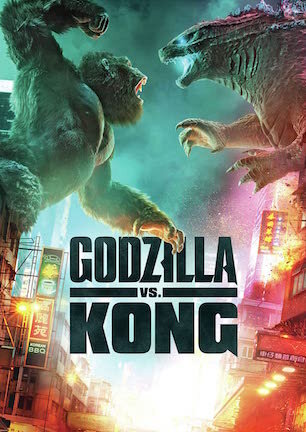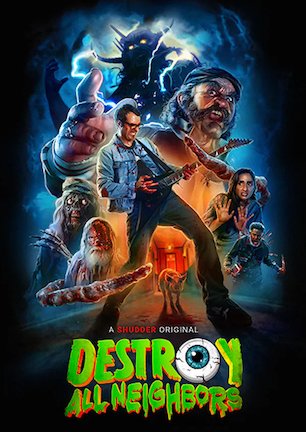Studio: Warner Bros.
Director: Adam Wingard
Writer: Eric Pearson, Max Borenstein
Producer: Thomas Tull, Jon Jashni, Brian Rogers, Mary Parent, Alex Garcia, Eric McLeod
Stars: Alexander Skarsgard, Millie Bobby Brown, Rebecca Hall, Brian Tyree Henry, Shun Oguri, Eiza Gonzalez, Julian Dennison, Lance Reddick, Kyle Chandler, Demian Bichir
Review Score:
Summary:
Godzilla and King Kong clash after a corporate conspiracy connected to their origins brings the two titans together.
Review:
Earlier in the week leading up to “Godzilla vs. Kong’s” release, the popular discourse among those who’d seen it early had to do with the film’s human characters. Whether someone liked or disliked the movie, the consensus seemed to be that the humans were paper-thin nobodies and their arcs could be considered inconsequential at best or interminably boring at worst.
That didn’t matter much to supporters who said, “Who cares? We want to see big behemoths battle, not fathers fretting over daughters or unnamed admirals looking at radar screens.” The opposite end argued, “Since we spend three times as many minutes on the ground with people than we do watching colossal creatures clash, shouldn’t more effort be put into making that side of the story as engaging as the CGI-soaked fights?” This got me thinking about roller coaster relationships with Godzilla and how self-set expectations shape our capacity to be satisfied.
The traditional Toho films evolved so unusually, they’re delineated by three separate eras. During the Showa period, early Godzilla movies carried Atomic Age commentary born from post-Hiroshima perspectives, yet transformed into kooky camp that included Godzilla’s googly-eyed son Minilla and Mothra’s miniature fairy twins. By the Heisei era, Godzilla built over kiddie cartoon appeal to be more comic book-y in nature, swinging back toward outer space monsters with some social subtext about pollution and corporate corruption. The Millennium series then threw continuity out the window and went harder on futuristic sci-fi. After 29 installments across 50 years, 2004’s “Godzilla: Final Wars” looked nearly nothing like the 1954 film that started it all.
The point is, Godzilla has stomped over every type of terrain imaginable. The conclusion I came to is that there is no “one” way to take every Godzilla movie unilaterally, although there usually is “one” way to take each Godzilla movie individually.
For instance, I wasn’t thrilled with “Shin Godzilla” (review here), yet many moviegoers were bowled over by its bold allegory for government negligence. Speaking specifically of issues with a Godzilla film’s human characters, my eyelids doubled in weight every time the scene shifted to a conference room or monitoring station where scientists and elected officials pondered Godzilla’s threat while the main attraction stood still in the center of the city. Suited diplomats gave speeches. Researchers presented folders filled with files. Was I watching a creature feature or CNN coverage of the U.S. House of Representatives voting on a routine agricultural bill?
In light of the COVID-19 pandemic, I’d probably be more receptive to “Shin Godzilla” now. What was intended at the time to be a biting indictment of Japan’s questionable hurricane response might now read as frighteningly relatable criticism of how poorly America’s executive administration handled a comparable crisis. Back in 2016 though, I wanted Godzilla being Godzilla, not politicians being politicians. My headspace wasn’t correctly conditioned for the film “Shin Godzilla” was, and that’s on me, not the movie. Hold that thought while we boomerang back to “Godzilla vs. Kong.”
I’m not entirely sure why “Godzilla vs. Kong’s” humans are perceived as problematically pedestrian. To be crystal clear, there are fully forgettable inclusions who may as well be ghosts given how little weight they have, particularly anyone seen as a sidekick of sorts. I perked up when TV vet Chris Chalk turned up in the prologue, except he’s never relevant again after the title text. No way did producers cast Lance Reddick to deliver one disposable line in a criminally paltry two camera setups. From Demian Bichir’s daughter Eiza Gonzalez to Millie Bobby Brown’s buddy Julian Dennison, a few folks with top billing could easily be combined into other characters too.
Coins to crullers, I’d wager what undoubtedly happened is a savvy editor said, “You know what? We really don’t need all of this.” That person was right. “Godzilla vs. Kong” doesn’t need any more humans than it already has and it doesn’t need the ones that do exist to do much more.
Stereotypes are in full effect, including Bichir’s whiskey-sipping corporate creep, Rebecca Hall’s Jane Goodall-inspired ape whisperer, and Kyle Chandler’s, well, he definitely doesn’t do much of anything. But whenever one of the humans does do something, it’s not to follow their own agenda of looking for a lost loved one or advancing an independent interest. Everything anyone does sets the stage for monster mayhem. It’s true that they’re slaves to serving up exposition. But that’s so Godzilla and Kong don’t have to, and can just beat on each other instead. Everyone fills the function they’re written for, no more and no less, and the film ends up with less fluff as a result.
Unlike other massive monster movies, where dust storms and frantic cameras cover FX seams by blurring action into indiscernible images, “Godzilla vs. Kong” showcases what fans most want to see. When the titular titans start a slugfest atop an aircraft carrier, the camera remains in a static wide shot so audiences actually see the full scope of Kong’s fist smashing into Godzilla’s face. Kong climbs buildings. Godzilla topples them. Kong hacks at Godzilla with a radioactive ax made from one of G’s dorsal fins. I wouldn’t give “Godzilla vs. Kong” a “dumb fun” label. It’s not mindless at all. It’s merely made for a mix of midnight movie and afternoon matinee havoc that’s as epically entertaining as summertime blockbusters get.
The script certainly coughs up a couple of hairballs with regards to characterization, but an all-star cast of familiar favorites coughs up casual charisma to compensate. To anyone digging too deep with criticism about believability, I’d remind them to swing a light that sees “Godzilla vs. Kong” as a soda and Sour Patch Kids spectacular, not a coffee and scones discussion piece.
“Godzilla vs. Kong” telegraphs its flippantly fantastical tone at the outset, when a chipper Bobby Vinton needle drop plays while Kong wakes from a slumber, scratches his ass, and yawns on his way to a Skull Island shower like any Average Joe. Only a certain amount of seriousness applies to a movie where a massive ape plays Steel Cage Match against a giant radioactive reptile. The filmmakers recognize this, even if not all viewers do.
Remember that thought I asked you to hold on to? The way to take “Godzilla vs. Kong” is as a modernized riff on classic mutant monster movies made for date night at the drive-in. The film’s far-fetched sci-fi featuring hyper-speed tunnel trains connecting Pensacola to Hong Kong, or gravitational inversion crafts capable of warping to the Earth’s core, isn’t remotely realistic. Neither was any of the claptrap concocted by military men combating oversized insects in the 1950s. “Godzilla vs. Kong” is only as complicated as it needs to be to give two of cinema’s greatest goliaths an eye-candy arena they can turn into Thunderdome.
Review Score: 75







No matter what a viewer gets out of the movie, there’s an inescapable sense that its disparate parts are still missing key pieces.